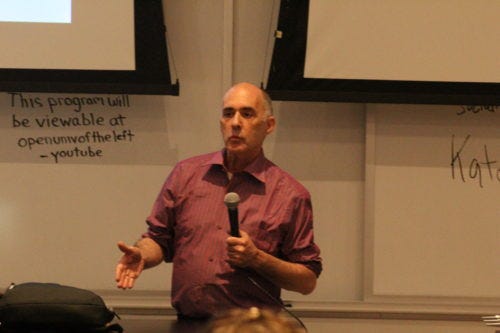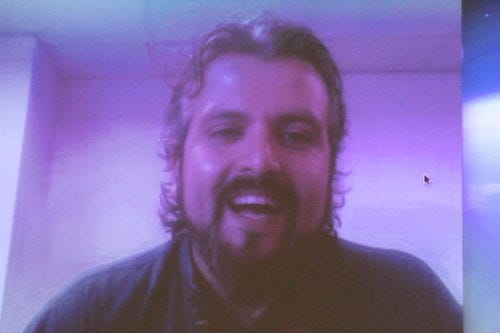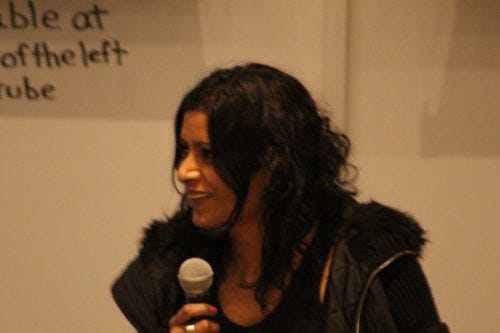Building a Shared Digital Space for the Left: Left Forum Day 3
The final session block for Left Forum had a lot of good panels on offer. Chris Hedges and Jill Stein delivered remarks in one room, Russell Dale hosted a Marxist overview of the current situation in another.
I attended the panel: Building Left Media in the Digital Commons. Chaired by Gregory Wilpert of The Real News, the panel featured Laura Flanders of The Laura Flanders Show; Paul Jay, founder of The Real News; Pablo Vivanco, head of Telesur English, and media critic and activist Priya Reddy, aka Warcry.
[F]landers told the crowd that the left needs to find a way to source a shared digital commons. She pointed to listener supported radio as a model.
“How is it so difficult for us to source a shared space?” she asked rhetorically, “This is a potential valuable shared asset in a scarce realm.”
For Flanders, the need to break out of the mainstream media monopoly is paramount for the left.
“The decline of the mega-monopoly media means that we could return to the era of the open media,” Flanders said. “Where we can hear different political perspectives.”
[J]ay used his time to present TRN’s local strategy. TRN aims to fill gaps of underserved communities that are ignored by their own media outlets.
TRN has an agenda and a point of view, Jay said, within the parameters of hard reporting.
“We’re journalists first,” he said, “But we know whose interests we are working for.”
Moving forward, Jay hopes TRN can export its model to other cities and municipalities.
“If it works in Baltimore, it should finance itself,” he said. “It should have financial sustainability.”
For more on Jay and TRN, check out my report from Friday.
[S]peaking from Ecuador, Vivanco told the panel about how Telesur is succeeding in its digital reach and work, and provided some warnings about what not to do.
Telesur is a “multistate funded pan-Latin-American satellite news that was started in 2005 as a Chavez project. Telesur English started in 2014.”
In the past two years, Vivanco said, Telesur English has learned a number of lessons about the digital media.
“Social media platforms are controlled by corporate media,” he said, “But these are the ways people consume information and news. To not participate is to cede space we shouldn’t cede.”
However, he said, there are some ways not to participate in social media.
“When we launched there was a fair amount of resources put into buying views and likes on social media platforms,” Vivanco said ruefully. “But social media functions on algorithms. You need organic engagement and reach- using networks and working with others, building engagement.”
[T]he last speaker was Priya Reddy. Reddy is a long time leftist activist and radical feminist advocate. She is an outspoken voice for independent media.
Reddy’s remarks focused on the destructive power of the mainstream news media.
“When the media is owned by the military industrial complex you’ll have problems keeping a job if you contest it,” Reddy said.
The only option, as she sees it, is for the left to create completely independent and autonomous medias.
“We have to make an alternative media,” Reddy declared. “We have no choice.”
Reddy also remarked on the left’s responsibility to confront the mainstream media and its powerful impacts.
“The mainstream media is destructive,” she said. “It’s a tactical error to ignore their power. It’s very much a life and death thing, the media’s covering up of the realities of the world.”
An alternative media can disrupt and threaten their power, she said. And it can do more good for the people it serves and amplifies.
“An alternative media is the outcry for self-expression.”
[spacer height=”20px”]
Taryn Fivek was in the audience. You should check out her project No Platform.
[spacer height=”20px”]





